The capture and commercialization of piangua bring benefit to more than 30.000 families living on the Pacific littoral of the Colombia.
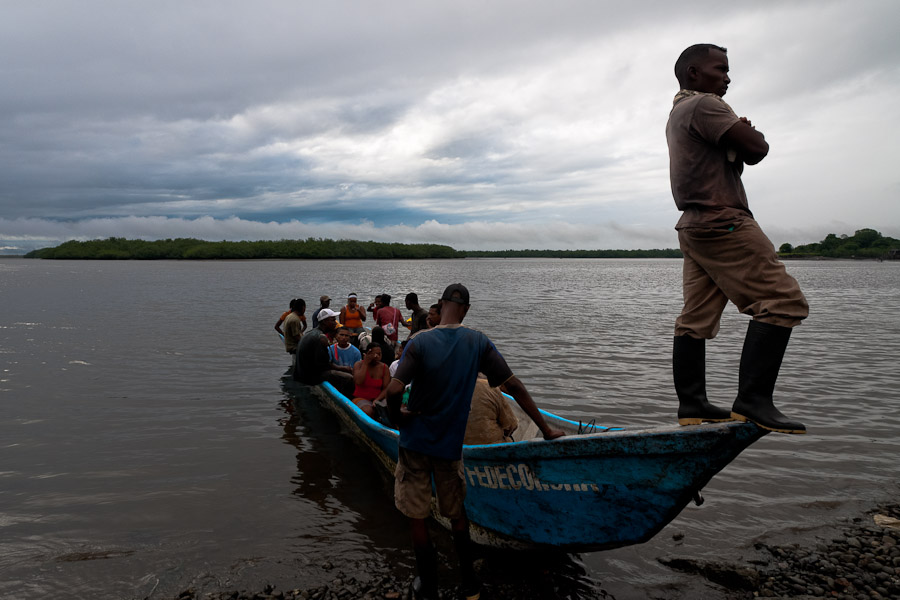
The piangua collecting in the mangrove swamps has been originally developed by Afro-Colombian women and it used to be the main source of protein for families living in extreme poverty.

Piangua is a local Spanish name for Anadara tuberculosa, a shellfish distributed from Mexico to Peru, living mainly in the mangrove swamps on the Pacific coastline.
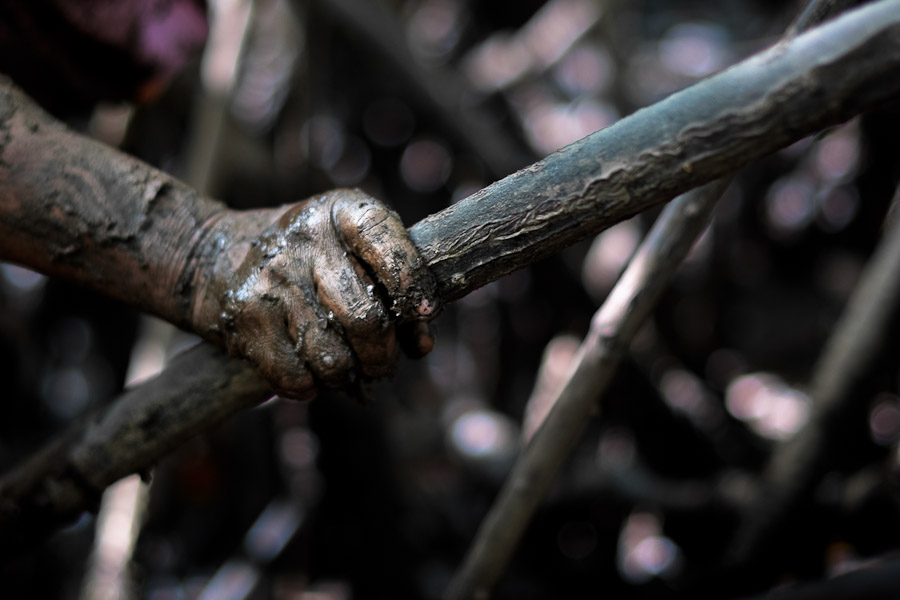
Mangrove forests grow where saltwater meets the shore in tropical and subtropical regions. They serve as an interface between terrestrial, fresh-water and marine ecosystems.
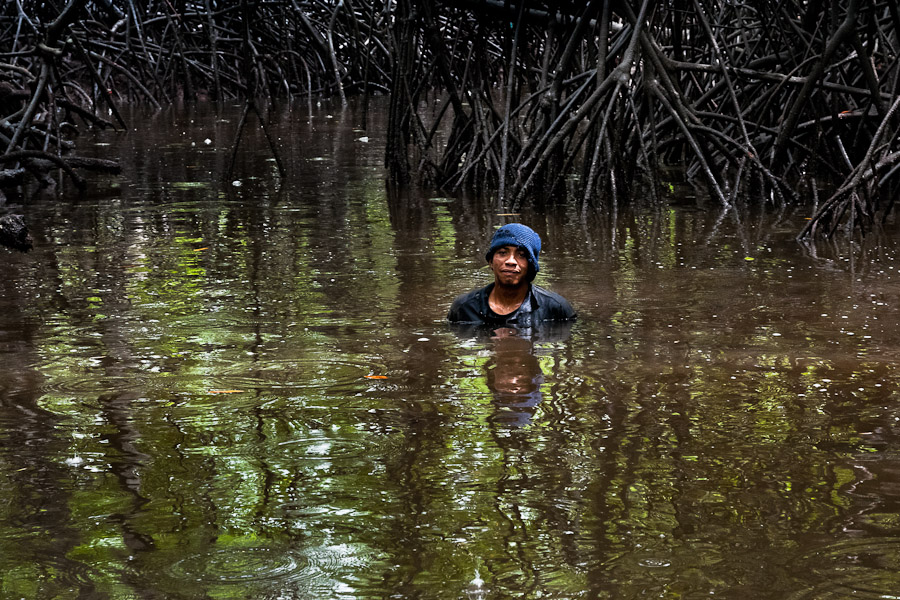
Facing the clouds of mosquitos inside the mangrove swamps, ‘concheros’ use to carry a pot filled with a smouldering tropical wood to protect themeselves against the mosquito bites and thus against malaria.
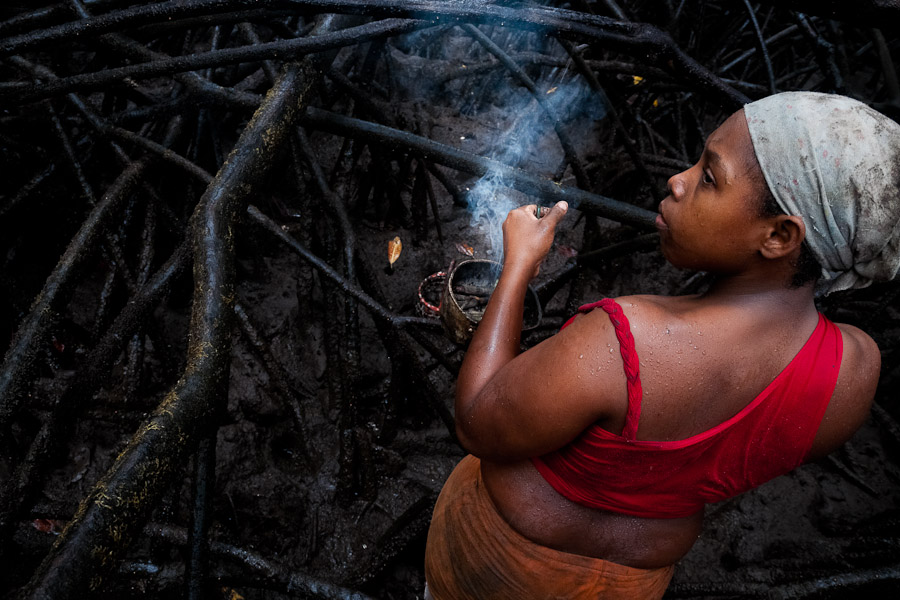
Some shellfish pickers are too poor to buy the rubber boots. Working in the mangrove swamps barefoot, they may get bitten by ‘pejesapo’, a local species of a venomous frogfish. Its bite is extremely painful and not easily curable.
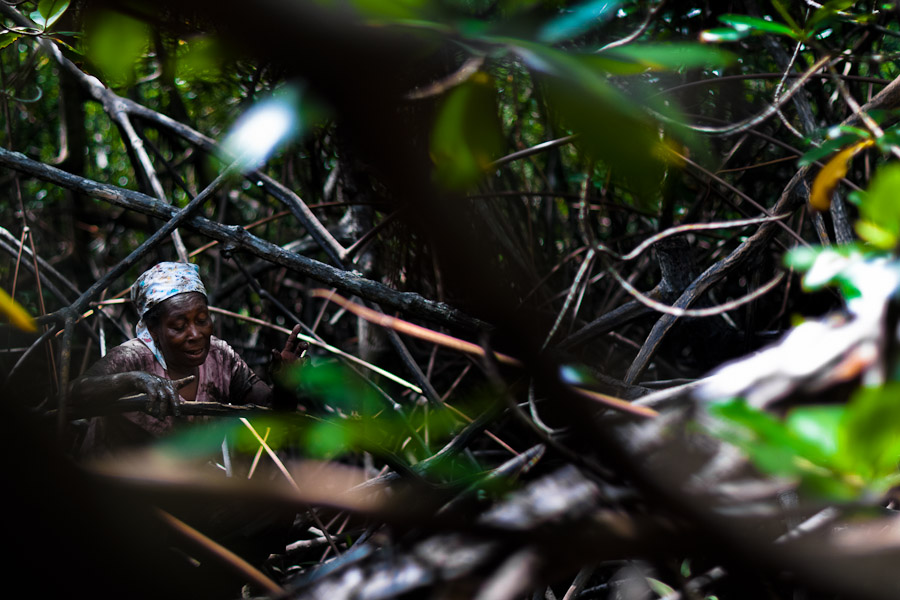
Although generally not accepted, some shellfish pickers mark the piangua-rich territories as they were their property. As they do not want other ‘concheros’ to work there, fights about the territory appear from time to time.
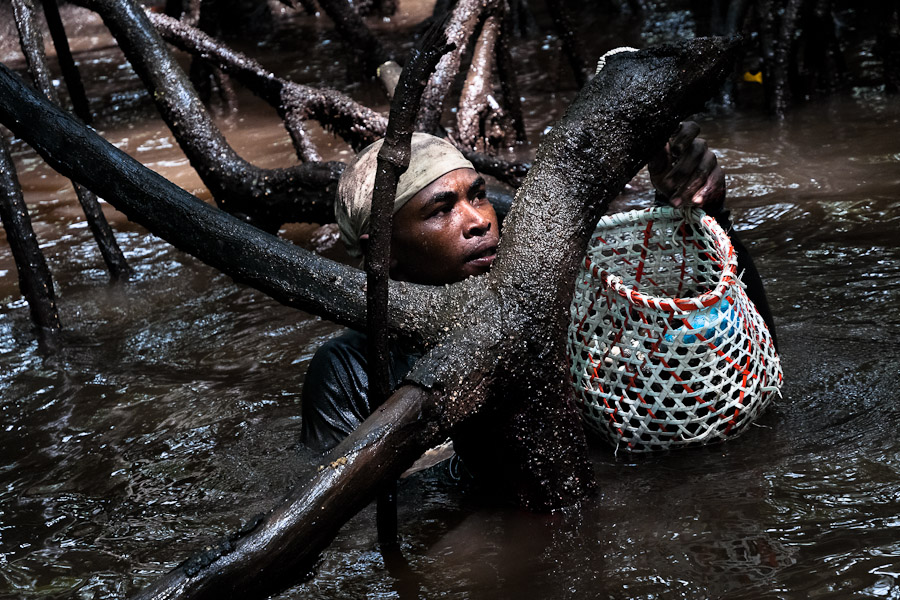
Pianguas can be gathered only during the low tide, when the low sea uncovers the mangrove tree roots and the shellfish pickers can enter the swamps and search for them. On the high tide ‘concheros’ return back to their village.
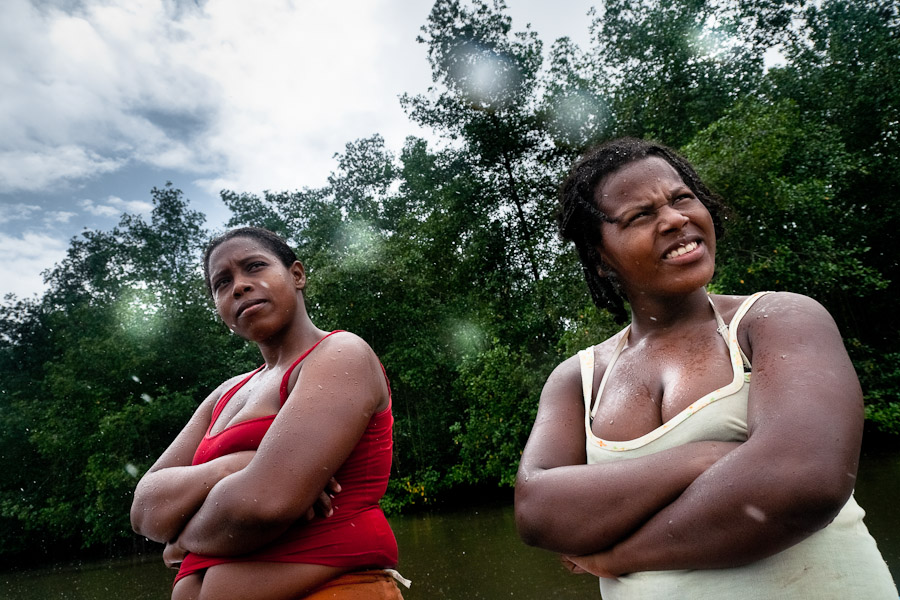
Although ‘concheros’ try to keep rotating the extracting areas in mangroves every two months and they comply with a minimum obligatory size of 50 mm, the natural populations of piangua have been reduced drastically.
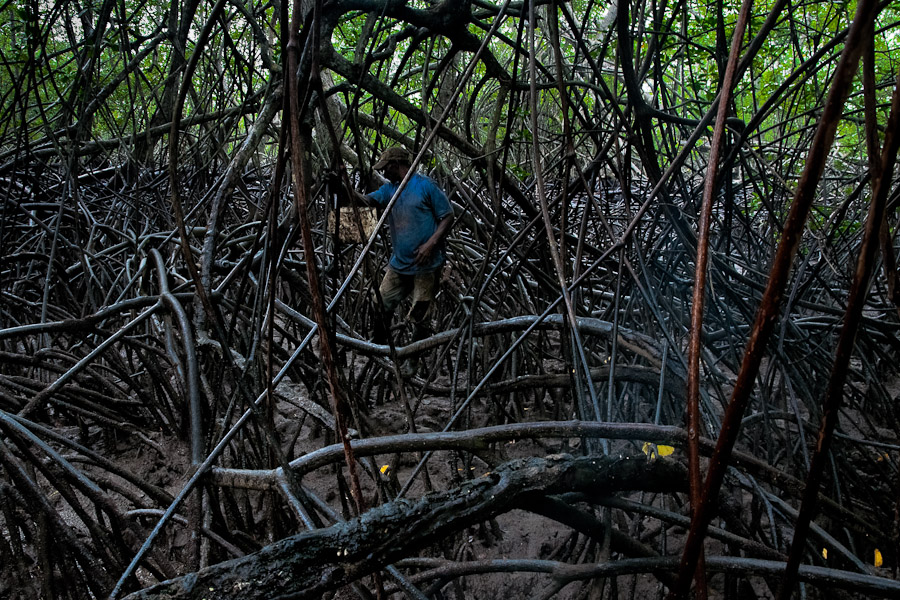
The strong demand for piangua in Ecuador caused an uncotrolled extraction of this mussel in the mangrove swamps on the Colombian Pacific coast.
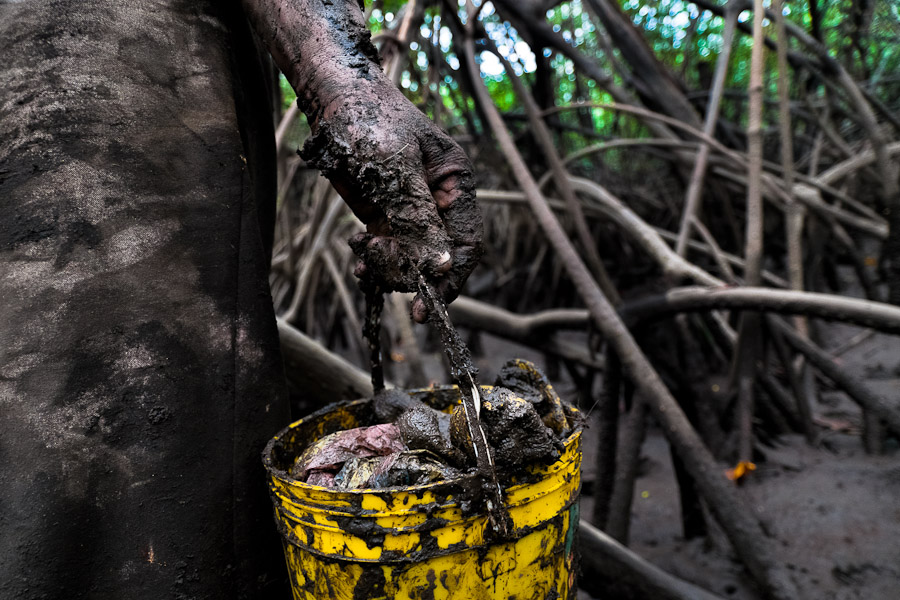
Most of the groups working in the mangrove swamps are organized by a local cooperative ASCONAR (Asociación de Concheras de Nariño) that provides the shared canoe and buys out collected mussels.
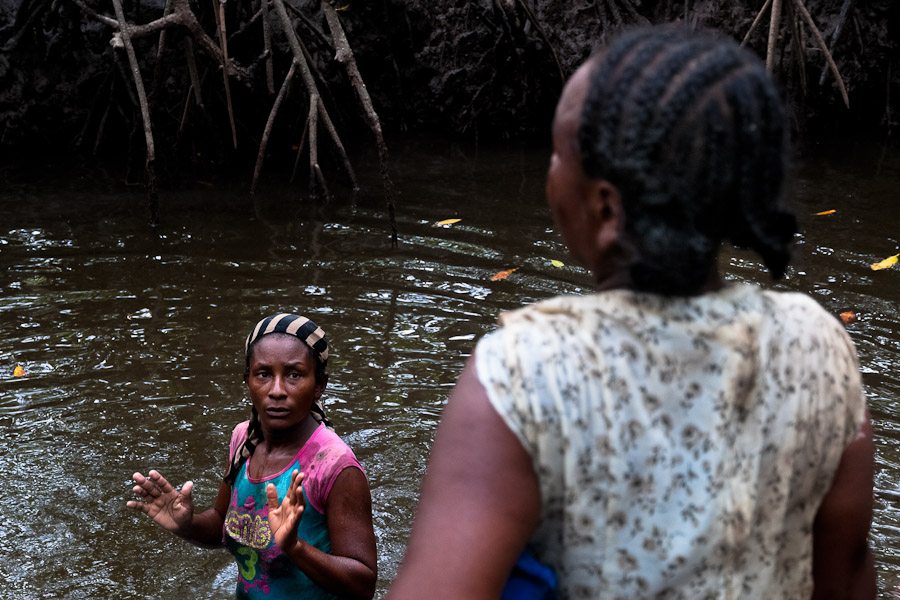
The shellfish pickers are mostly Afro-Colombians, displaced due to the Colombian armed conflict. They live in stilt house communities on the coast around Tumaco, the capital of the Nariño department.
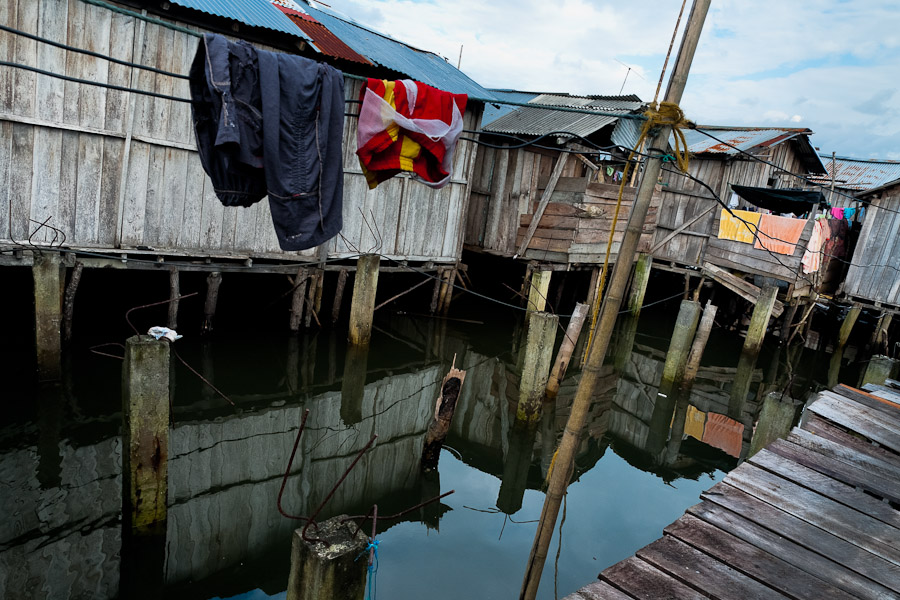
From more than 300 million pieces of piangua extracted in the mangrove swamps of Colombia every year, about 80% of the production is exported.

Shellfish pickers in mangrove swamps
Tumaco, Colombia – June 2010
Deep in the impenetrable labyrinth of mangrove swamps on the Colombian Pacific coast, hundreds of people struggle every day, searching and gathering a tiny shellfish called ‘piangua’. They wade through sticky mud and climb up the wet mangrove tree roots, no matter of unbearable tropical heat or strong rain. Facing the clouds of mosquitos, they pick up mussels hidden deep in mud. The whole process of the capture is rudimentary and pretty much depends on chance. Although ‘concheros’ (the shellfish pickers) take a high risk of malaria infection and a danger of being bitten by poisonous frogfish (‘pejesapo’), their salary does not exceed on average 10 US dollars per day.
Most of the shellfish pickers working in the mangrove swamps are Afro-Colombian families. Due to the Colombian armed conflict, many peasants had fled from rural areas of the Nariño department and ended up in the poor stilt house communities on the coast around Tumaco. The lack of employment, no education and the food shortage usually force them to work in swamps. As those families live in extreme poverty, eating piangua often represents the main source of protein in their alimentation.
In the last years, the exploitation of this shellfish has increased because of the strong demand in neighbouring Ecuador. From more than 300 million pieces of piangua extracted every year in Colombia, about 80% of the production is exported. Savage extracting practices (picking undersized pieces) and over-exploitation have drastically decreased the natural population of piangua. Latest investigations realised in the area showed that the piangua extraction capacity has been reduced to 10% of what was ten years ago. The WWF prognosis warns that if the sustainable strategy is not implemented soon, piangua would stand on the verge of extinction within a couple of years.
















no comments yet